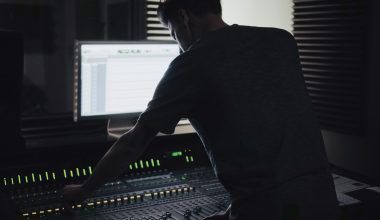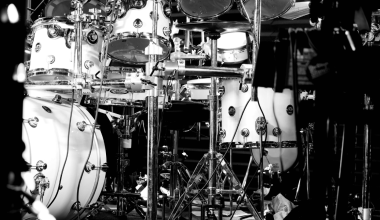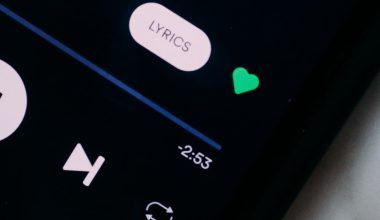Music creation has evolved drastically over the years. Gone are the days when artists had to meet in a studio to collaborate on their next big hit. Thanks to music collaboration software, musicians can now create, share, and refine their work with others from anywhere in the world. This technology has opened up a world of possibilities for aspiring and professional artists alike. If you’ve ever wondered how these tools work, which ones to use, and how to make the most of them, you’re in the right place.
What Is Music Collaboration Software?
Music collaboration software is a digital tool designed to help musicians, producers, and composers work together seamlessly. These platforms often come with features like real-time editing, cloud storage, and communication tools, making it easy for teams to share ideas and refine tracks. Whether you’re working on a solo project or collaborating with a global team, this software bridges the gap, allowing creativity to flow effortlessly.
Why Musicians Need Music Collaboration Software
- Connect with Talent Worldwide: Gone are the geographical barriers. With just an internet connection, you can collaborate with vocalists, instrumentalists, and producers from all corners of the world.
- Save Time and Resources: Forget endless email threads and bulky file transfers. These platforms streamline communication and file sharing, saving you hours of back-and-forth.
- Real-Time Collaboration: Some software even allows multiple users to work on the same track simultaneously, keeping everyone on the same page.
- Cloud Storage: Never lose your work. With cloud storage, you can access your files anytime, anywhere.
- Easy Feedback Loop: Most platforms allow users to leave comments and suggestions directly on the project, making the review process smoother than ever.
Top Features to Look For
Before diving into specific platforms, let’s discuss the must-have features you should look for in music collaboration software:
1. Ease of Use
A complicated interface can kill your creative vibe. Look for software that’s user-friendly and intuitive, especially if you’re new to digital music creation.
2. Compatibility
Ensure the software is compatible with your DAW (Digital Audio Workstation) and other tools you use. It’s even better if it works across multiple devices and operating systems.
3. Real-Time Editing
Being able to see changes as they happen can make a huge difference, especially during brainstorming sessions.
4. Cloud Integration
Your software should have robust cloud storage features to keep your projects safe and accessible.
5. Communication Tools
Built-in chat or video call features can make collaboration smoother, reducing the need to switch between apps.
Best Music Collaboration Software in 2024
With so many options available, choosing the right software can feel overwhelming. Here are some of the best music collaboration tools currently on the market:
1. Splice
Splice is a favorite among musicians for its simplicity and vast library of loops, samples, and presets. It’s an excellent tool for both beginners and seasoned pros.
Features:
- Cloud-based project sharing
- Massive sample library
- Integration with popular DAWs
2. Soundtrap
Owned by Spotify, Soundtrap is perfect for musicians who want an all-in-one solution. It’s browser-based, so there’s no need to install additional software.
Features:
- Real-time collaboration
- Built-in instruments and loops
- Easy sharing on social media platforms
3. BandLab
BandLab is a free, feature-rich platform that’s ideal for beginners and budget-conscious musicians.
Features:
- Unlimited projects
- Mastering tools
- Social networking capabilities
4. Avid Cloud Collaboration
Designed for Pro Tools users, Avid’s collaboration feature is perfect for professionals who demand high-quality tools.
Features:
- Seamless integration with Pro Tools
- Real-time collaboration
- High-quality audio support
How to Use Music Collaboration Software Effectively
Using music collaboration software effectively requires more than just downloading the app. Here are some tips to help you make the most out of your experience:
1. Set Clear Goals
Before you start, outline what you want to achieve. Whether it’s completing a song or experimenting with new sounds, having a goal keeps everyone on track.
2. Communicate Openly
Good communication is key. Use the built-in chat or video call features to discuss ideas and provide feedback.
3. Organize Your Files
Keep your projects organized. Use folders, labels, and notes to make it easy for collaborators to find what they need.
4. Respect Time Zones
If you’re working with people from different parts of the world, be mindful of time zones when scheduling meetings or expecting updates.
5. Experiment Freely
Don’t be afraid to try new things. Collaboration often leads to unexpected and exciting results.
The Future of Music Collaboration
As technology continues to advance, music collaboration software is only going to get better. Features like AI-assisted composing, virtual reality studios, and blockchain for copyright management are already on the horizon. These innovations promise to make collaboration even more accessible and efficient.
Conclusion
Music collaboration software has revolutionized the way artists create and share music. Whether you’re a solo artist looking for inspiration or part of a band trying to coordinate remotely, these tools have something to offer. By choosing the right platform and following best practices, you can unlock your full creative potential and take your music to the next level.
For further reading, explore these related articles:
- Masters to Music: A Journey of Passion and Learning
- How Do You Upload Music to Apple Music? A Step-by-Step Guide
For additional resources on music marketing and distribution, visit DMT Records Private Limited.






